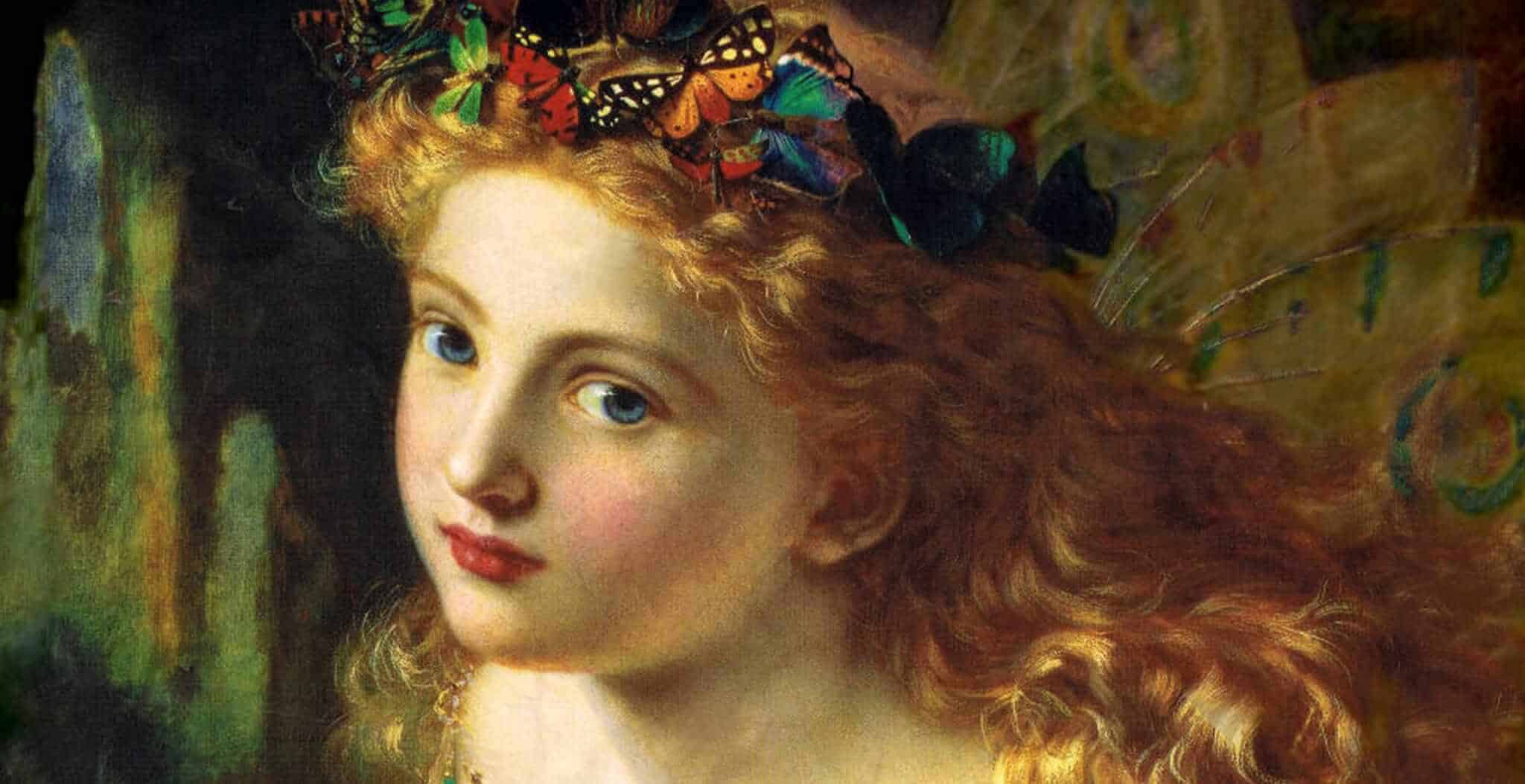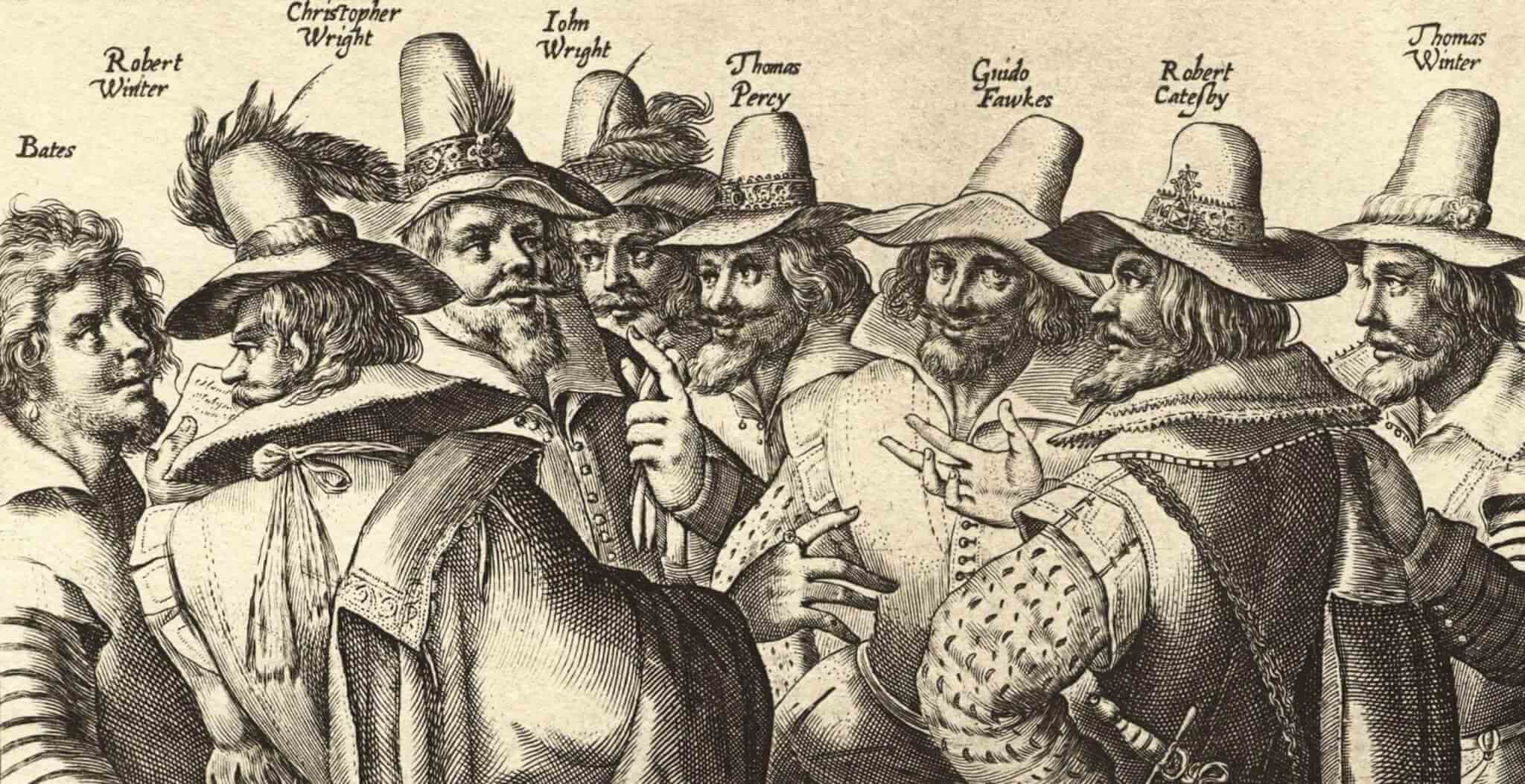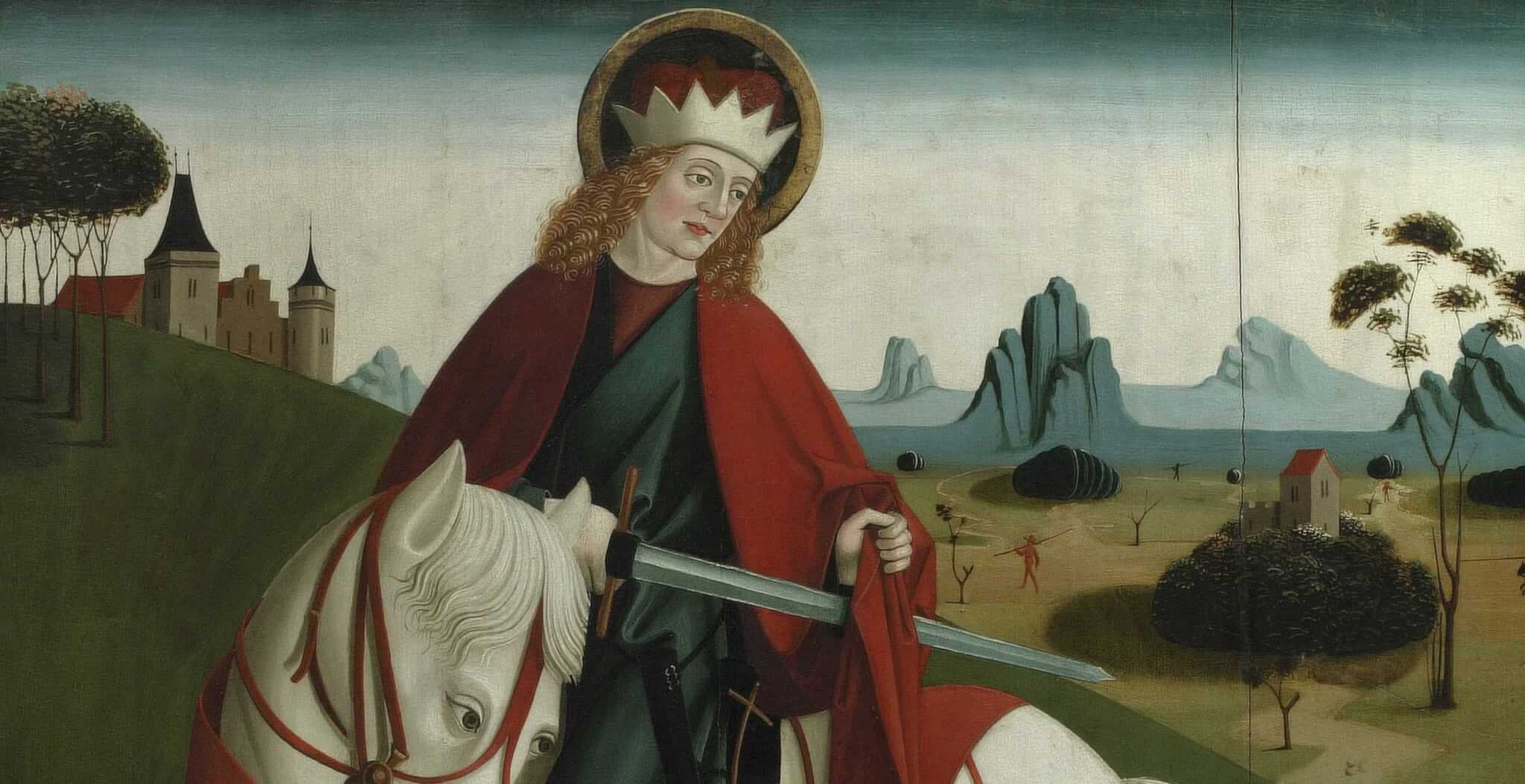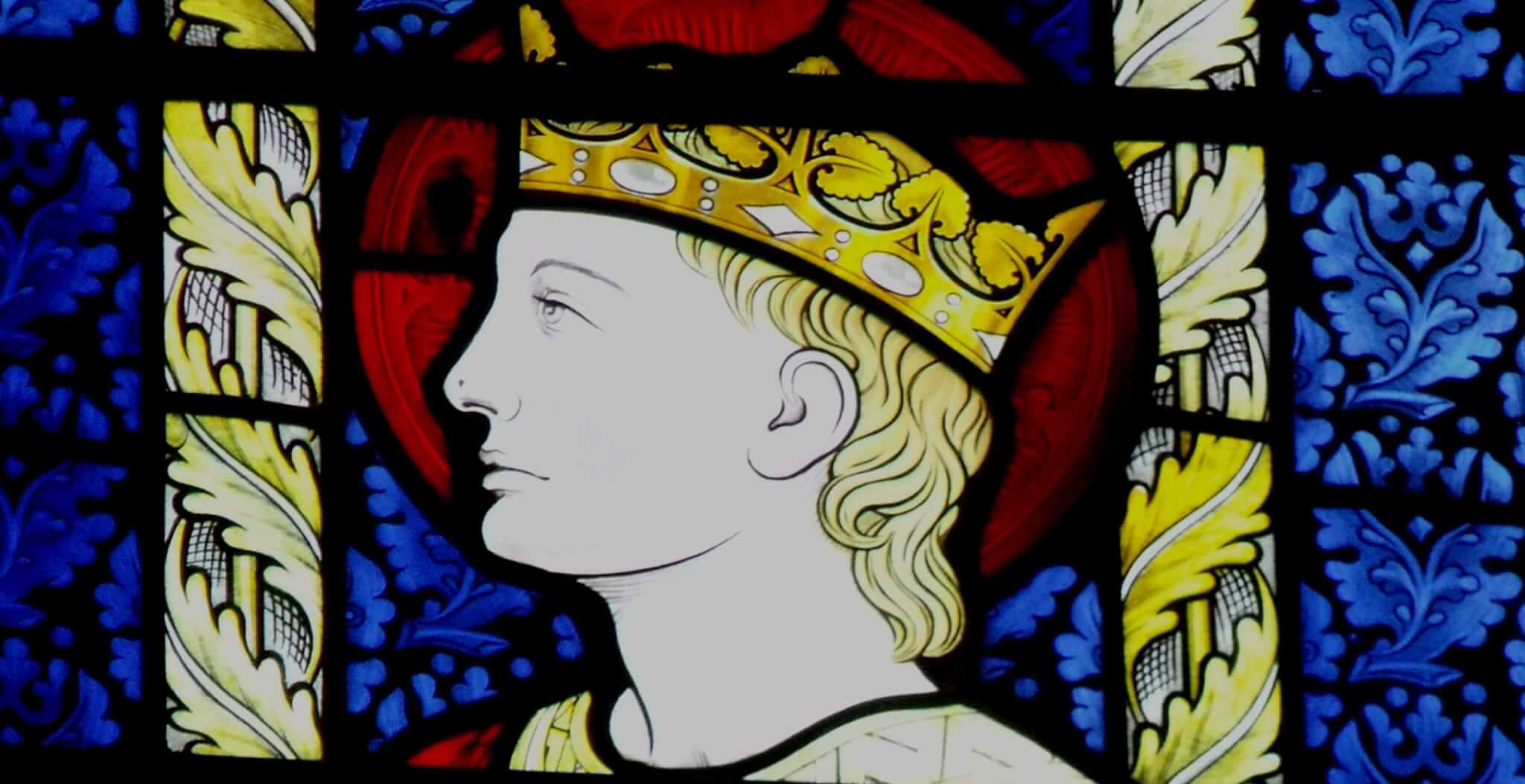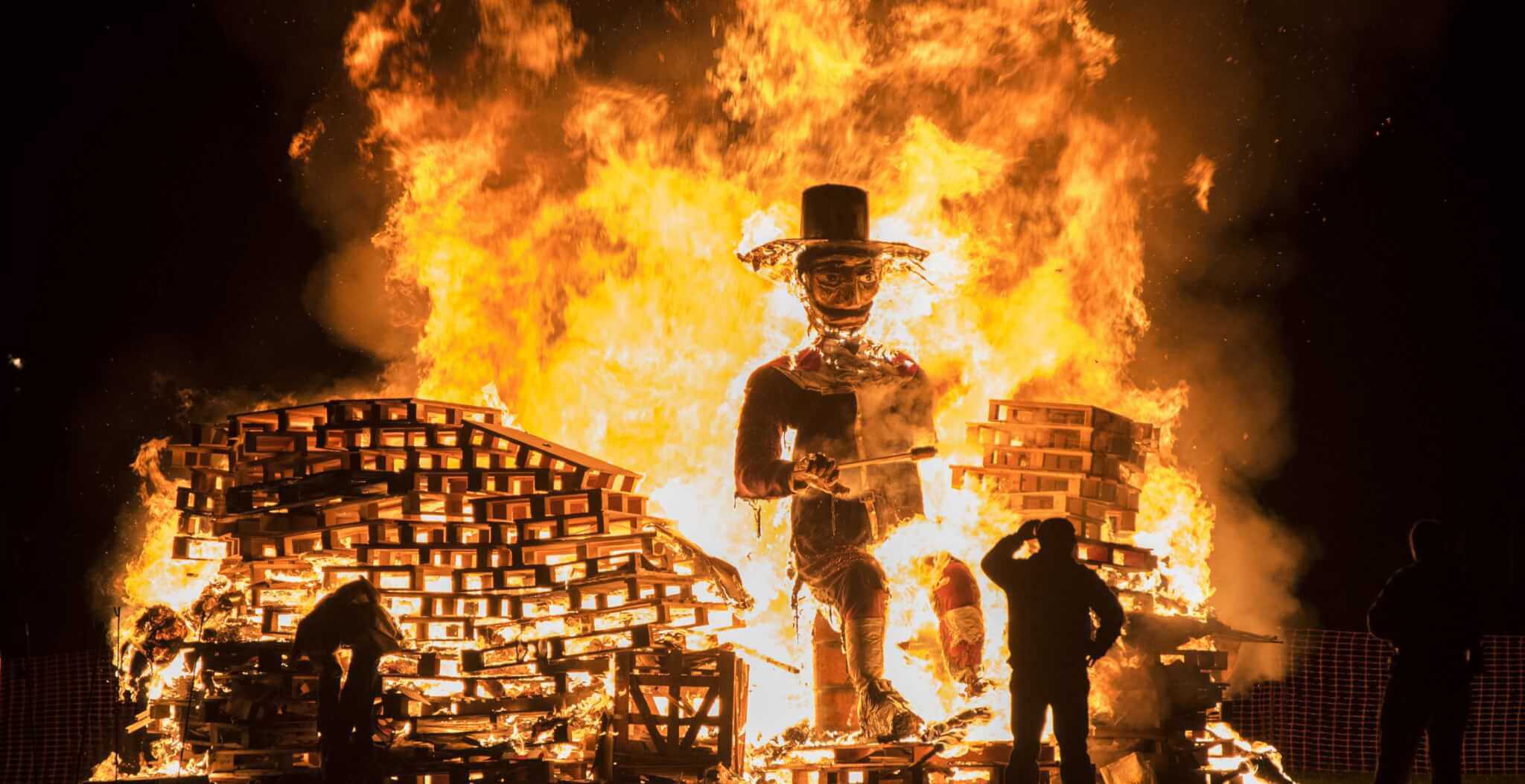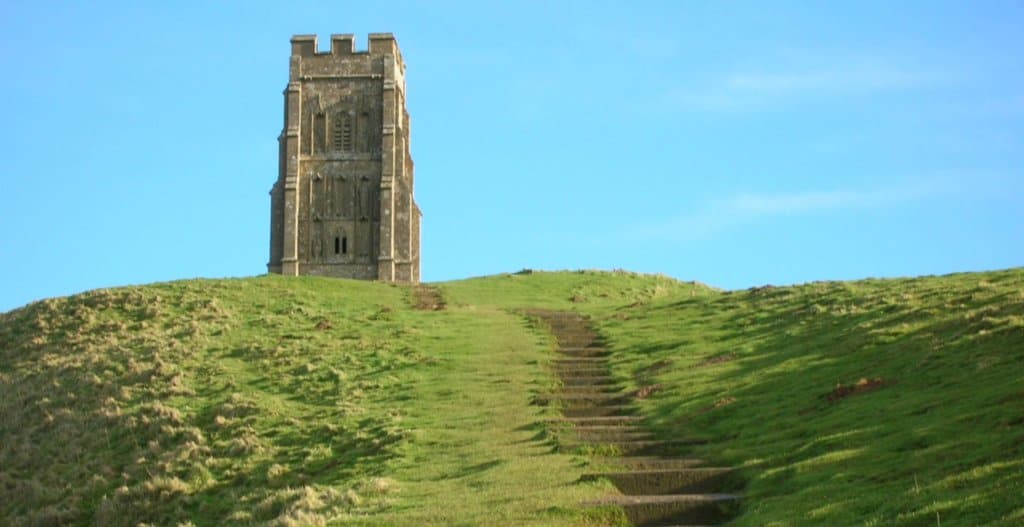Remember remember the fifth of November…gunpowder, treason and plot!
Readers should always check with local Tourist Information Centres (TIC’s) that events or festivals are actually taking place before setting out to attend.
Permanent dates in November
| 1st November | Samhain | The Celts divided their year into two seasons: the light and the dark, at Beltane on 1st May and Samhain. Many believe that Samhain was the more important festival, marking the beginning of a new cycle. Just as the Celtic day began at night, it was believed that in the darkness new life would emerge, similar to the stirring of the seed below the ground. The most magical time of this festival was November Eve, the night of 31st October, better known today as Halloween. In the country year, Samhain marked the first day of winter, when the herders led the cattle and sheep down from their summer pastures to the shelter of the stables. Those destined for the table were slaughtered. All the harvest must be gathered in by this date — barley, oats, wheat, turnips, and apples — for come November, the faeries would blast every growing plant with their breath, blighting any nuts and berries remaining on the hedgerows With the rise of Christianity, Samhain was changed to Hallowmas, or All Saints’ Day, to celebrate the saints in heaven, and so the night before became popularly known as Halloween. The 2nd November became All Souls Day, when prayers were to be offered to the souls of the departed. Throughout the centuries, pagan and Christian beliefs and celebrations have intertwined and from 31st Oct through to 5th November, they are particularly confusing. |
| 1st November | All Saints Day | A Christian Feast that celebrates its saints. The origins of the Feast date back to around 400. All Saints is a day to venerate and pray to the saints in heaven for help in whatever matter concerns or troubles you. |
| 2nd November, or 3rdNovember if the 2nd falls on a Sunday. | All Souls Day | Also known as the “Day of the Dead”, the day in the Celtic year when the Festival of the Dead took place. It was once the custom to leave doors open and food on the table to nourish the souls of recently departed family members. All Soul’s Day is now a Roman Catholic day of remembrance for those who have passed away. The day purposely follows All Saint’s Day in order to shift the focus from those in heaven to those in purgatory. It is celebrated with masses and festivities in honour of the dead. Whilst the Feast of All Saints is a day to remember the glories of Heaven, the Feast of All Souls is a reminder to live holy lives. |
| 5th November | Bonfire Festivals | Across Britain the words of a children’s nursery rhyme “Remember, remember the 5th of November, gunpowder, treason and plot” are chanted as fireworks fly and bonfires gradually consume a human effigy known as the ‘Guy’. So who was this ‘Guy’? – Guy Fawkes… a 17th century terrorist who wanted the streets of London to run red with blood. The year 2005 marks the 400th anniversary of history’s most famous act of terrorism. |
| 5th November | Rolling the Tar Barrels Ottery St.Mary, Devon |
For reasons lost in antiquity, every year the Flaming Tar Barrels are rolled through the streets of Ottery St.Mary to the delight of thousands of townsfolk. Starting with the junior barrels in late afternoon the sizes of the barrels grow until the final giant one is rolled through as midnight calls. It is a great honour to be allowed to take part in the barrel rolling and this has continued in some local families for generations. A gigantic bonfire crowned with Guy Fawkes himself, forms an impressive backdrop to the occasion. This is an extremely ancient tradition, older than Guy Fawkes himself. Fire festivals around the time of Halloween are deeply rooted in British folklore and have been connected with the ritual burning of witches. |
| 5th November | Turning the Devil’s Boulder Shebbear, Devon |
After nightfall men carrying crowbars with women lighting their way approach the huge stone close to the village church. As the church bells peal out the villagers set to work to turn the stone over. Apparently the devil lives under the stone, and ‘turning the Devil’s boulder’ is meant to avert bad fortune. One legend recalls that the stone was quarried on the other side of the River Torridge at a nearby village, apparently intended as a foundation stone for a church there. But the devil rolled it away to Shebbear – and continued doing this every night as the villagers repeatedly rolled it back during the day. Interestingly the stone is not of a type found locally and may therefore have been transported there in ancient times for some ritualistic purpose. |
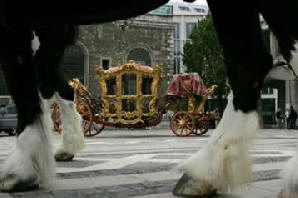
Lord Mayors Show. Photograph © Corporation of London
Flexible dates in November
| Saturday closest to the 9th of the month | Lord Mayor’s Show | City of London | There has been a Lord Mayor of London ever since 1189, when Henry Fitzailwyn first held the office. It wasn’t until 1215 however, that King John granted a Charter allowing the citizens of city to elect their own mayor. The Charter stipulated that the new Mayor must be presented to the Sovereign for approval and to swear fealty to the Crown, so each year the newly elected Mayor had to travel from the City to Westminster to pledge allegiance. The Lord Mayor has been making that yearly journey for almost 800 years, surviving plague, fire, countless wars and insurrections. Over the years the Mayor’s Journey became so splendid that it became known as the Lord Mayor’s Show. Today’s Show mixes past, present and future as Londoners join together to enjoy a celebration of the City’s tradition and future. |
| Second Saturday in the month | Tar Barrel Rolling | Hatherleigh, Devon. | The first run of barrels through the streets starts at 5am; the carnival starts a little later. |
We have taken great care in recording and detailing the festivals, customs and celebrations presented in our Folklore Year calendar, if however you consider that we have omitted any significant local event, we would be delighted to hear from you.
Related Links:The Folklore Year – January |
